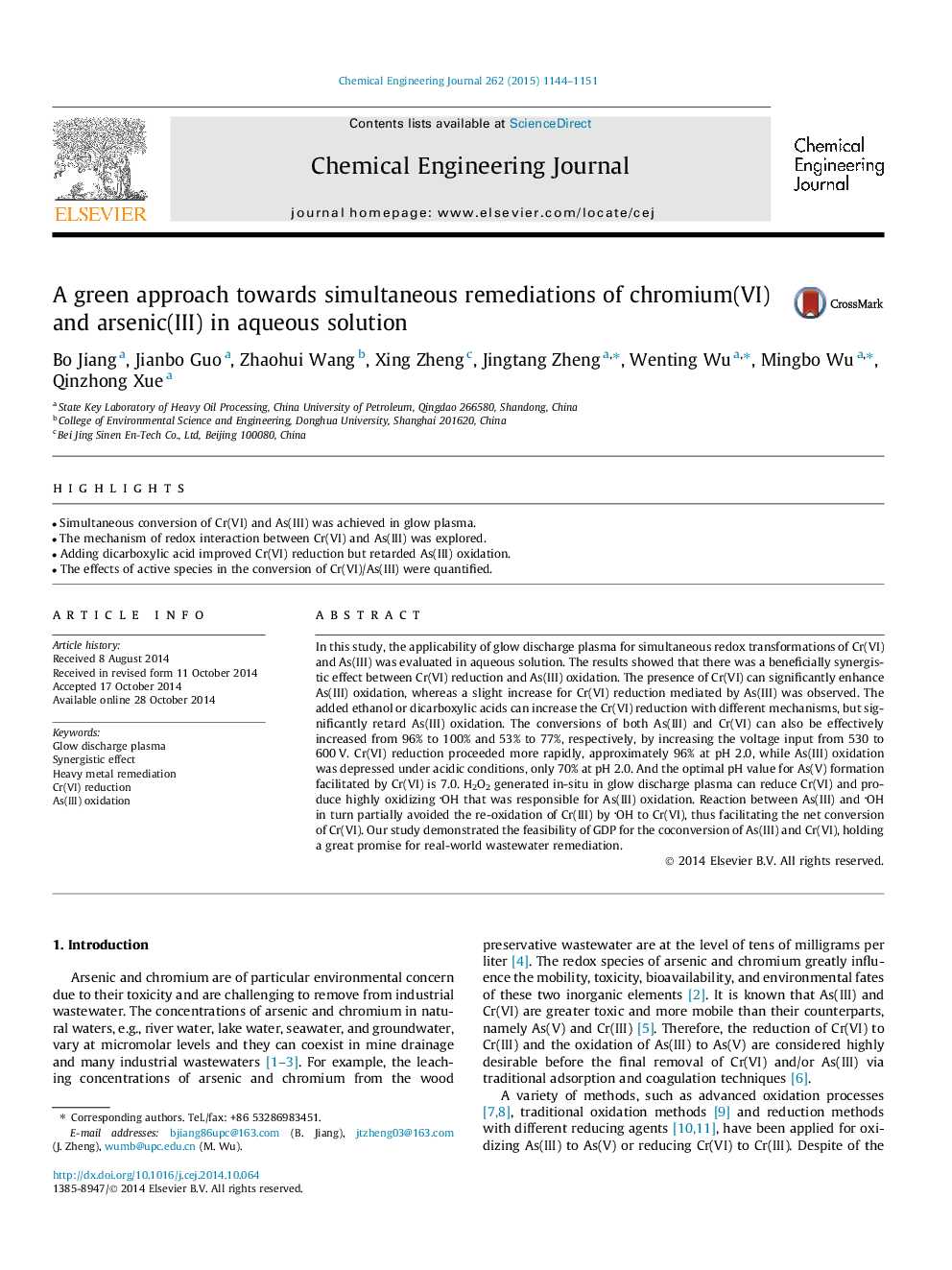| Article ID | Journal | Published Year | Pages | File Type |
|---|---|---|---|---|
| 6585621 | Chemical Engineering Journal | 2015 | 8 Pages |
Abstract
In this study, the applicability of glow discharge plasma for simultaneous redox transformations of Cr(VI) and As(III) was evaluated in aqueous solution. The results showed that there was a beneficially synergistic effect between Cr(VI) reduction and As(III) oxidation. The presence of Cr(VI) can significantly enhance As(III) oxidation, whereas a slight increase for Cr(VI) reduction mediated by As(III) was observed. The added ethanol or dicarboxylic acids can increase the Cr(VI) reduction with different mechanisms, but significantly retard As(III) oxidation. The conversions of both As(III) and Cr(VI) can also be effectively increased from 96% to 100% and 53% to 77%, respectively, by increasing the voltage input from 530 to 600Â V. Cr(VI) reduction proceeded more rapidly, approximately 96% at pH 2.0, while As(III) oxidation was depressed under acidic conditions, only 70% at pH 2.0. And the optimal pH value for As(V) formation facilitated by Cr(VI) is 7.0. H2O2 generated in-situ in glow discharge plasma can reduce Cr(VI) and produce highly oxidizing OH that was responsible for As(III) oxidation. Reaction between As(III) and OH in turn partially avoided the re-oxidation of Cr(III) by OH to Cr(VI), thus facilitating the net conversion of Cr(VI). Our study demonstrated the feasibility of GDP for the coconversion of As(III) and Cr(VI), holding a great promise for real-world wastewater remediation.
Keywords
Related Topics
Physical Sciences and Engineering
Chemical Engineering
Chemical Engineering (General)
Authors
Bo Jiang, Jianbo Guo, Zhaohui Wang, Xing Zheng, Jingtang Zheng, Wenting Wu, Mingbo Wu, Qinzhong Xue,
